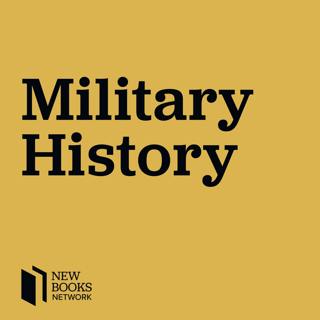
Gregory J. W. Urwin, “Victory in Defeat: The Wake Island Defenders in Captivity” (Naval Institute Press, 2010)
Gregory J. W. Urwin’s Victory in Defeat: The Wake Island Defenders in Captivity (Naval Institute Press, 2010) tells the story of the Americans captured on Wake Island in December 1945. The Wake Island garrison’s defeat of the initial Japanese landing attempt was one of the few bright spots for Americans in the opening weeks of the Second World War and earned the praise of President Roosevelt. The surrender of the small Marine garrison and the civilian contractors working on the atoll on December 23, 1941 may have ended the battle, but for those men, the struggle for survival was just beginning. They spent the remaining three and a half years of the war in various Japanese prison camps. And survive most of them did. Of the 1621 Americans taken prisoner, 1378 returned – a mortality rate roughly half that suffered by Allied prisoners of the Japanese as a whole. Urwin argues that discipline, outside aid, and a good measure of luck accounted for the survival of so many of the Wake Islanders. He also highlights the important role that Japanese policy and behavior played. The captives certainly suffered their share of cruelties and the crimes of the Japanese army and navy against these men were many. But without the humanity, and even occasionally the kindness, of their captors, many more of these Americans would have died. Victory in Defeat is an impressive book that tells a gripping and important story. Learn more about your ad choices. Visit megaphone.fm/adchoices Support our show by becoming a premium member! https://newbooksnetwork.supportingcast.fm/military-history
3 Maalis 20111h 2min

J. E. Lendon, “Song of Wrath: The Peloponnesian War Begins” (Basic, 2010)
Reading J. E. Lendon’s writerly Song of Wrath: The Peloponnesian War Begins (Basic Books, 2010) took me back to the eventful days of my youth at Price Elementary School, or rather to the large yardon which we had recess. We called it a “playground.” But we did not play on it. We did battle. We did not fight for treats or for love or for sport. These things were trivial to us. No, we fought for honor. One achieved honor not by getting good grades, or by having the best lunch, or by making the most friends. Everyone knew that these things were the spoils of honor, not the causes of it. Rather, one gained honor by physical intimidation and, if necessary, combat. Honor was fair: it paid regard to neither sex, nor race, nor class. Girls and boys, blacks and whites, rich and poor could all have whatever honor they could earn. But honor was also brutal: the strong and brave (or should we say “reckless”) usually had it, while the weak and timid (or should we say “sensible”) usually did not. Interestingly, the former did not “bully” the latter very often. At least at Price Elementary School, humiliating a much weaker opponent was considered, somehow, dishonorable. But among the strong and brave there were constant contests of honor, often violent. The “hegemons,” if we may so speak, enjoyed high honor. But they also suffered from constant fear that they might lose it. And so anxious class champions would challenge one another, fight, and the victor would humiliate the vanquished (“Say ‘uncle’!”). For the defeated party, eager to regain his or her honor, there was only one honorable course: revenge–swift, ruthless, and public. So it went, day in and day out on the “playground” at Price Elementary School. And so it went, year in and year out, on the battlefields of fifth-century Greece. Please become a fan of “New Books in History” on Facebook if you haven’t already. Learn more about your ad choices. Visit megaphone.fm/adchoices Support our show by becoming a premium member! https://newbooksnetwork.supportingcast.fm/military-history
18 Helmi 20111h 7min

Thomas Weber, “Hitler’s First War: Adolf Hitler, the Men of the List Regiment, and the First World War” (Oxford UP, 2010)
Here’s something interesting. If you search Google Books for “Hitler,” you’ll get 3,090,000 results. What’s that mean? Well, it means that more scholarly attention has probably been paid to Hitler than any other figure in modern history. Napoleon, Lincoln, Lenin and a few others might give him a run for his money, but I’d bet on Hitler. The fact that so much effort has been expended on Hitler presents modern German historians with a problem: it’s hard to say anything new about him. The fact that so much effort has been expended on Hitler presents modern German historians with a problem: it’s hard to say anything new about him. Surely Thomas Weber knew this when he began to work on Hitler’s First War: Adolf Hitler, the Men of the List Regiment, and the First World War (Oxford UP, 2010). After all, a new book on Hitler’s wartime experience had come out in 2005. What more is there to say? It turns out that there is quite a lot if you know where to look. And Weber does. He uses an interesting approach to uncover novel information about Hitler. Weber acknowledges that the documentary record relating directly to Hitler’s personal wartime experience is thin (a few letters, some military reports) and, when it is thicker, biased (more than a few axe-grinding memoirs from a much later time). These documents, all of which have been pored over by historians, will not shed any new light on Hitler. So Weber turns to a much larger and more trustworthy body of sources: that produced by the officers and soldiers in Hitler’s unit, the List Regiment. Though these papers usually do not mention Hitler by name, they enable Weber to reconstruct what he must have experienced, to see what was typical and what was not in Hitler’s service record, and, on the basis of this information, judge the veracity of claims made by Hitler, Nazi propagandists, and historians about the impact of World War I on the the Nazi dictator. The result is a serious revision. Hitler (et al.) said that World War one “made” him the person he became. Weber shows in detail that this claim is false. Fundamental elements of Hitler’s worldview either pre-date the war (his German nationalism) or seem to post-date it (his radical anti-semitism). In fact, the war did two things for Hitler: it gave him credibility he could use as he entered politics and it convinced him that he was an expert in military affairs. He ran for office as a humble Gefreiter (private), a holder of the Iron Cross First Class; and he ran the war as a dilettantish know-it-all, often with disastrous consequences. The only revelation Hitler had in the trenches was a common one, namely, that war is a very nasty business. That he went on to start another, even bloodier one has less to do with his experience of World War One than the ideas he brought to the conflict and absorbed after it. Please become a fan of “New Books in History” on Facebook if you haven’t already. Learn more about your ad choices. Visit megaphone.fm/adchoices Support our show by becoming a premium member! https://newbooksnetwork.supportingcast.fm/military-history
3 Joulu 20101h 21min

Joe Maiolo, “Cry Havoc: How the Arms Race Drove the World to War, 1931-1941” (Basic Books, 2010)
In Cry Havoc: How the Arms Race Drove the World to War, 1931-1941 (Basic Books, 2010), Joe Maiolo proposes (I want to write “demonstrates,” but please read the book and judge for yourself) two remarkably insightful theses. The military industrial complex was born three decades before Eisenhower put a name on it. The first is that the primary result of the disaster that was World War I was not the even great catastrophe that was World War II, but rather a new kind of state and one that is still with us. Maiolo’s argument goes something like this. World War I caught the Great Powers flatfooted. They did not believe they were going to fight a protracted war; they thought things would be done quickly and with the men and materiel on hand. Instead, things bogged down and a massive war of attrition–something they had no experience with–ensued. In order to fight this war successfully (meaning to stay in it for the long term), the Great Powers had to fundamentally restructure their economies, something no state had ever had to do, at least in modern time. In a word, the government took over production and distribution in order to optimize the flow of arms and supplies. Many statesmen found this move objectionable, but all believed it necessary. Once the war was over, they remained convinced that the only way to deter their enemies and, in the case they couldn’t, fend them off, was to retain control of large segments of the economy and plan to take control of even larger segments. The ability to make war on a World-War-I scale and for a World-War-I duration had to be built into the “plan.” Thus the leaders of all the Great Powers effectively militarized their economies in anticipation of the next great conflict. The military industrial complex was born three decades before Eisenhower put a name on it. Maiolo’s second insight has to do with the origins of World War II itself. Most historians agree that it was “Hitler’s War.” He planned it, he armed Germany for it, and he started it. Maiolo doesn’t necessarily disagree with this position, but he offers an interesting counter-factual that puts it in a different light. What if there had been no Hitler? Would the statesmen of Europe have avoided a second great conflict? Maiolo suggests not, and for an interesting reason. Several of the Great Powers–the Soviets and Germans in particular–were very dissatisfied with the settlement at Versailles. They would not stand pat in any case. Given what we know about Soviet and German plans for and movements toward rearmament before 1933 (thanks, it should be said, to Maiolo’s own research), it is not clear that leaders other Stalin or Hitler might not have done exactly what Stalin and Hitler did in 1939, that is, take what they felt was rightfully “theirs” by force of arms. And as Maiolo shows, they would have had plenty of arms at their disposal in any case. The Europeans were going to go at again; it was simply a question of when. Please become a fan of “New Books in History” on Facebook if you haven’t already. Learn more about your ad choices. Visit megaphone.fm/adchoices Support our show by becoming a premium member! https://newbooksnetwork.supportingcast.fm/military-history
12 Marras 20101h 1min

Valerie Hebert, “Hitler’s Generals on Trial: The Last War Crimes Tribunal at Nuremberg” (University Press of Kansas, 2010)
Clausewitz famously said war was the “continuation of politics by other means.” Had he been unfortunate enough to witness the way the Wehrmacht fought on the Eastern Front in World War II, he might well have said war (or at least that war) was the “continuation of politics by any means.” Hitler was terribly specific about this. The Slavs, he said, were Untermenschen (subhumans). The Communists were Judeo-bolschewisten (Jewish Bolsheviks). Soviet soldiers were keine Kameraden (not comrades-in-arms). The East was future German Lebensraum (living space). All this meant that the ordinary rules of armed conflict had to be suspended. The German armed forces were to conduct a Vernichtungskrieg, a war of annihilation. The German military had never been in the business of wanton destruction. On the contrary, it prided itself on being the most professional fighting force in the world. It was admired for many things, but two of them were honor and loyalty. And it was the clash of these two otherwise laudable traits that got the Wehrmacht in deep trouble, for Hitler essentially ask the German military to choose between the two in the East. Would the army uphold the traditional, honorable ideal of civilized military conduct, or would it remain loyal to Hitler and prosecute his Vernichtungskrieg? As Valerie Hebert shows in her remarkable Hitler’s Generals on Trial: The Last War Crimes Tribunal at Nuremberg (University Press of Kansas, 2010), they chose the latter course. At Hitler’s request, they murdered civilians, starved prisoners of war, and enslaved occupied peoples by the millions. So it’s little wonder that after the war the victors called the leaders of the Wehrmacht to account for their thoroughly criminal behavior. And here they behaved no better, for they lamely claimed that they didn’t commit these outrages, didn’t know others were committing them, or were under orders so they had no choice. When they did admit to killing thousands in one or another Aktion, they claimed it was military necessity or that they were forced to be brutal because the Soviets were more brutal still (a pathetic instance of blaming the victim). Given the setting (their honor and even lives were on the line), it’s not surprising that they lied and rationalized. What is more unsettling is that they showed little or no remorse for what they had done (during or after the trials) and that they enjoyed considerable sympathy within the German population. As Valarie points out, the Germans mounted large campaigns both against the Nuremberg proceedings and for the release of the Wehrmacht-criminals after they had been incarcerated. The former were unsuccessful, though the latter resulted in the premature release of nearly all those convicted in the Wehrmacht trials. Please become a fan of “New Books in History” on Facebook if you haven’t already. Learn more about your ad choices. Visit megaphone.fm/adchoices Support our show by becoming a premium member! https://newbooksnetwork.supportingcast.fm/military-history
27 Elo 20101h 5min

Todd Moye, “Freedom Flyers: The Tuskegee Airmen of World War II” (Oxford UP, 2010)
In the 1940s, the United States military performed an “experiment,” the substance of which was the formation of an all-black aviation unit known to history as the “Tuskegee Airmen.” In light of the honorable service record of countless African Americans, allowing blacks to become fighter and bomber pilots might not seem very “experimental” to you, but you have to put yourself in the mindset of the era in question to understand how “experimental” it was. Jim-Crow segregation was nearly universal, especially, though not exclusively, in the South. The armed forces were similarly segregated, with blacks serving in what might be mildly called “auxiliary roles” and whites doing all the commanding and fighting. There were few black officers (and they never supervised white troops) and no black military pilots. Most of the (nearly all white) “brass” could not conceive of integrated units and doubted the ability of African Americans to serve as line officers; most of those in the majority white voting public shared these views. When the argument to native ability failed (after all, black units had performed well in the Civil War and World War I), opponents of integration fell back on a familiar argument: if “we” allow “them” to serve with “us,” chaos will ensue and fighting effectiveness will suffer. But black leaders didn’t buy it; they wanted integration. The Roosevelt administration sat on the fence. It clearly couldn’t embark on full-scale integration (and, it must be said, FDR himself had doubts about it), but it couldn’t forgo black votes. So it compromised: blacks would get one high-profile flying unit, but integration would be deferred. And so the great experiment began. Todd Moye has mined the archives and talked to the airmen to tell the tale of how said experiment proceeded in his terrific Freedom Flyers: The Tuskegee Airmen of World War II (OUP, 2010). It’s a tale I found both uplifting and shocking. I’m not usually one to heap praise on people, but the pilots themselves were remarkably brave. It is hard for me to imagine what they went through to get their wings and fight for the country they loved. I found myself again and again asking “How could they do that?” Todd does a terrific job of setting the scene and helping us understand their struggle. I confess I find it just as hard to enter the mindset of those whites who stood against them. They were racists and more frighteningly racists with absolutely clean consciences. When they said that blacks didn’t have the “right stuff” to become pilots, to command troops, to serve in integrated units, they believed it. Their testimony, again very ably related by Todd, is simply difficult to read. Here too I found myself asking again and again “How could they do that?” It was a different world. Parts of it, however, are obviously still with us. What is “Don’t Ask, Don’t Tell” but the executive branch’s attempt to find a “middle way” between integrationists and their opponents? Harry Truman, where are you now? Please become a fan of “New Books in History” on Facebook if you haven’t already. Learn more about your ad choices. Visit megaphone.fm/adchoices Support our show by becoming a premium member! https://newbooksnetwork.supportingcast.fm/military-history
23 Heinä 20101h 3min

Azar Gat, “War in Human Civilization” (Oxford UP, 2006)
Historians don’t generally like the idea of “human nature.” We tend to believe that people are intrinsically malleable, that they have no innate “drives,” “instincts,” or “motivations.” The reason we hew to the “blank slate” notion perhaps has to do with the fact–and it is a fact–that we see remarkable diversity in the historical record. The past, we say, is a foreign country; they do things differently there. But there are also political reasons to hold to the idea that we have no essence, that everything is “socially constructed.” Where, for example, would modern liberalism be without this concept? If our natures are fixed in some way, then what should we do to improve our lot? Given the strength and utility of the “blank slate” doctrine, anyone hoping to question it successfully must possess considerable political savvy and, more importantly, an overwhelming mass of evidence. When the first modern challenge was issued–by the Sociobiologists of the 1970s–they had the latter (I would say), but not the former. Happily, their successors–principally the practitioners of “evolutionary psychology”–have both (again, in my opinion). Azar Gat is a good example. In his pathbreaking War in Human Civilization (Oxford UP, 2006), he explains in politically palatable and empirically convincing terms just why, evolutionarily speaking, our evolved natures guided the way we have fought over the past 200,000 years. He rejects the notion that we have anything like a “violence instinct.” Rather, we have a kind of “violence tool,” given to us by natural selection. In certain circumstances, we are psychologically inclined to use it; in others, not. In this way we are no different than many of our fellow species, the primates in particular. Of course, unlike them, our use of collective violence has an (extra-genetic) history. Azar does a masterful job of describing and explaining how, even while our nature has remained the same, the way we fight has changed. And here the news is good: believe it or not, we–humanity as a whole–have been becoming more peaceful over the past 10,000 years, and radically more peaceful (at least in the developed world) over the past 200 years. Azar can explain this too, and does in the interview. I cannot emphasizeenough how important this book is, both as a model of what I would call “scientifically-informed” history and a sort of guide to those of us who, despite having abandoned the “blank slate,” believe that we have the capacity to create a better world. Please become a fan of “New Books in History” on Facebook if you haven’t already. Learn more about your ad choices. Visit megaphone.fm/adchoices Support our show by becoming a premium member! https://newbooksnetwork.supportingcast.fm/military-history
15 Heinä 201053min

John Steinberg, “All the Tsar’s Men: Russia’s General Staff and the Fate of the Empire, 1898-1914” (Johns Hopkins UP, 2010)
The Bolshevik Revolution of 1917 was the most important political event of the twentieth century (no Revolution; no Nazis; no Nazis, no World War II; no World War II, no Cold War). It’s little wonder, then, that historians have expended oceans of effort and ink trying to explain why and how it happened. The answer is complex, but it boils down to this: Nicholas II’s armies had a rough time of it in World War I, his regime lost credibility, the hungry cities revolted, and the Bolsheviks usurped power in an armed coup. The key event was, then, the Russian loss to the Germans on the Eastern Front. Surprisingly, the Russian defeat –arguably the second most important political event of the twentieth century because it triggered the first–has not been widely studied. For my generation of Russian historians (and, I should add, the one that preceded it), the Revolution–the last, best hope of mankind to many–was a sexy topic indeed; the failure of the Russian Imperial Army, not so much. So we were left in the dark (or, rather, left ourselves in the dark). There were, however, historians who went against this grain. Among them are (to name only a few and those who write in English): John Bushnell, William Fuller, Peter Gatrell, Hubertus Jahn, Eric Lohr, Bruce Menning, David Rich, David Schimmelpenninck van der Oye, Norman Stone, Allen Wildman and our guest today John Steinberg. Steinberg’s wonderful new book All the Tsar’s Men: Russia’s General Staff and the Fate of the Empire, 1898-1914 (Johns Hopkins/Wilson Center, 2010) is a significant contribution to our understanding of the roots of the Russian defeat in World War I. His focus is the Imperial General Staff and its struggle (failed, as it turned out) to reform itself and the army that it commanded. As Steinberg points out, their task was a difficult one, made much more so by Russia’s all-encompassing (and to a considerable degree self-imposed) backwardness. The leaders of the General Staff were smart people. They knew what to do to make the Imperial Army a first-rate fighting force. Under other leadership, they might have succeeded in modernizing the army. But Nicholas did not lead, and so nothing could be done. Autocracies depend on autocrats, and Russia had none when it needed one most. Please become a fan of “New Books in History” on Facebook if you haven’t already. Learn more about your ad choices. Visit megaphone.fm/adchoices Support our show by becoming a premium member! https://newbooksnetwork.supportingcast.fm/military-history
9 Heinä 20101h 11min





















